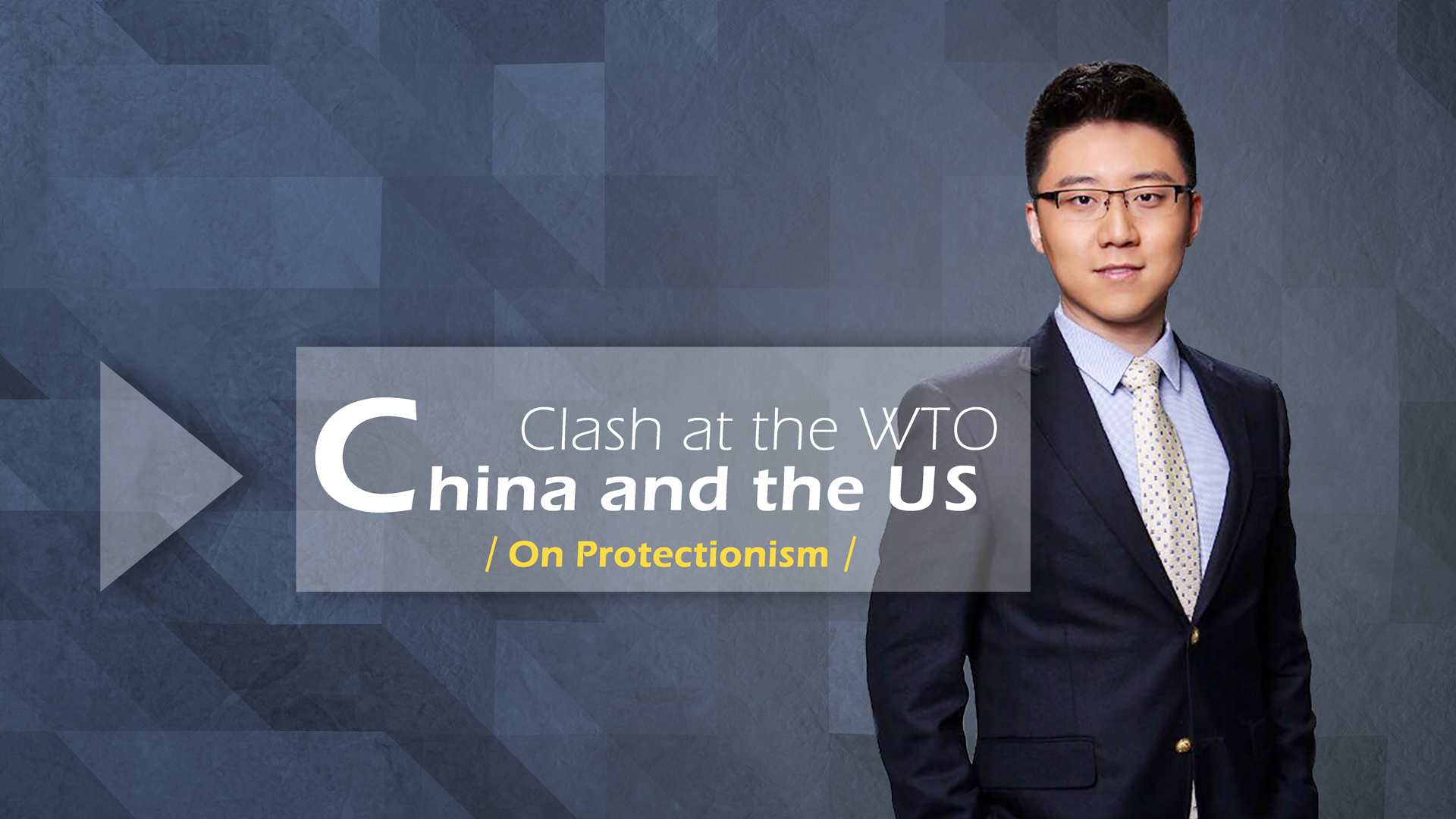
Opinions
09:04, 31-Aug-2018
China and the US clash at the WTO – on protectionism
Updated
09:55, 05-Sep-2018
CGTN's Michael Wang
04:03

At the World Trade Organization's July General Council meeting in Geneva, the US ambassador to the WTO, Dennis Shea, said this about China: "China is in fact the most protectionist, mercantilist economy in the world." But is that really a fact, or simply sensationalism?
Most protectionist and mercantilist economy is a serious accusation for one country to level against another. This accusation should not be casually thrown around, especially in a setting such as the World Trade Organization.
Let's start with the accusation that China is the most protectionist economy. Protectionism can be defined as the restriction to some degree of foreign imports and market access to a domestic market. Virtually all nations engage in some kind of protectionism, but is China the most protectionist? Let's run through a few numbers.
Firstly, China's weighted average tariff rate stood at 3.54 percent in 2016. This is higher than the 1.67 percent and 1.96 percent seen in the advanced economies of the United States and European Union, but is much lower than the 6.35 percent and 8.01 percent weighted average tariff rates seen in other developing economies such as India and Brazil.
China cannot be the most protectionist economy when its weighted average tariff rates have fallen by over four fold since its entry into the WTO and stands much lower compared to other developing economies.
Secondly, China has 16 free trade agreements or FTAs in place and 24 more are in the works as we speak. Would any nation sign, negotiate or even consider the feasibility of a free trade agreement with the most protectionist economy in the world? Clearly not.
Thirdly, if China is the most protectionist, why would global companies actively seek to do business here in China? It wouldn't make sense on a return on investment or risk management perspective. The UN Conference on Trade and Development noted that investment promotion agencies rated China as the second most attractive destination in the world for foreign direct investment for 2017 to 2019.
China was also the second largest recipient of FDI last year after the United States. In 2015, sales by US subsidiaries in China totaled 482 billion dollars, this is 114 billion dollars more than the US merchandise trade deficit with China that year.
On a net income basis, in 2017 US subsidiaries in China made double what they did in India and more than all of US subsidiaries in Germany, France, and Spain combined. There would be no way for sales and profits of US companies to reach that kind of level if China is the most protectionist economy in the world.
Fourthly, and perhaps the most telling, is a statistic tracked by the Global Trade Alert. The Global Trade Alert is an initiative of the Center for Economic and Policy Research based in London. It was formed in 2009 to track protectionist moves following the global financial crisis to see if nations would resort to protectionist policies to shield their home economies during times of recession.
According to the Global Trade Alert, from 2009 to 2018, the country with the most number of harmful interventions to global trade implemented 1,538 protectionist measures. That top ranking country, maybe to the surprise of a lot of people, is actually: the United States.
It's easy for one economy to call another the most protectionist. In the case of the US calling China the most protectionist, once again, the numbers don't add up. But don't forget, the US also called China the most mercantilist economy in the world. Does this statement have any basis in fact, or is this just sensationalism once more? What exactly is a mercantilist economy and does China fit that bill? Next time we'll debunk this second accusation that the US has leveled against China.
So, stay tuned.

SITEMAP
Copyright © 2018 CGTN. Beijing ICP prepared NO.16065310-3
Copyright © 2018 CGTN. Beijing ICP prepared NO.16065310-3